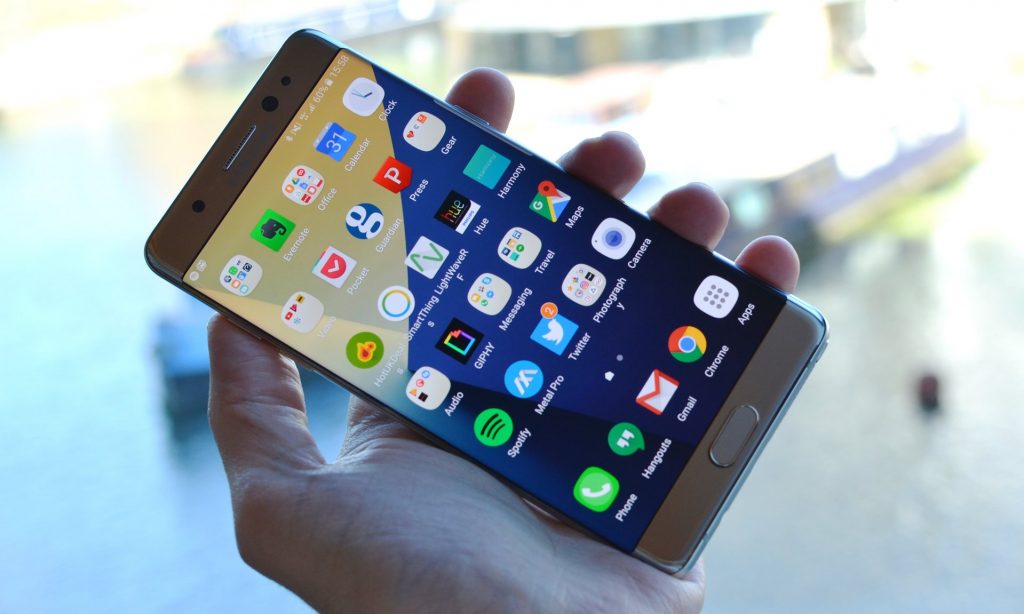
Photograph: Samuel Gibbs for the Guardian
The Galaxy Note 7 is the return to the UK for Samsung’s king of the stylus-equipped phablets, but does anyone really want a stylus anymore?
Even if the answer is “no” and you never touch the “S Pen”, the Note 7 offers something else. It is one of the first phones of any size that users can unlock using their eyes with the built-in infrared iris scanner.
Curved front and back
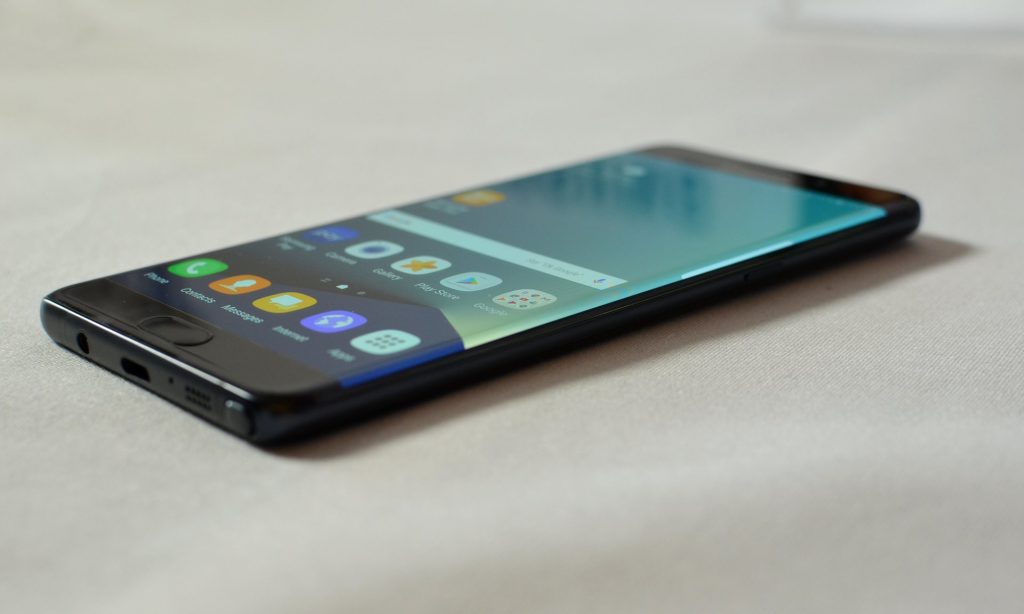
Photograph: Samuel Gibbs for the Guardian
The Note 7 is the spitting image of the Galaxy S7 Edge. A curved screen bends down towards the sides and a glass back is rounded in a similar fashion to the front. There is a small metal band around the outside. Side-by-side the only obvious difference is that the Note 7 is very slightly larger.
Advertisement
It’s 7.9mm thick, 153.5mm tall and 73.9mm wide. The S7 Edge is 0.2mm thinner, 2.6mm shorter and 1.3mm narrower. The Note 7 is also 12g heavier at 169g, with the stylus docked. The differences are negligible in use, which makes the Note 7 one of the easiest big phones to use, and makes its chief rivals, the Apple iPhone 6S Plus and Nexus 6P, look positively fat in almost every dimension bar thickness – the iPhone and Nexus are both 7.3mm thick.
The curved screen edges are more aesthetic than functional, but help to maintain a narrow width which makes holding the Note 7 so much easier than almost any other phablet. It feels great in the hand, with a level of refinement in the edges, materials and shape beyond any previous Note.
The 5.7in quad HD AMOLED screen is one of the brightest, clearest and best I’ve ever seen on a smartphone, with inky blacks and bold colours. It’s clearly visible outdoors, which is remarkable for the often easily washed out OLED-based screens, and is even better than that fitted to the already excellent S7 Edge.
The Note 7 is also waterproof to IP68 standards which means 1.5m for 30 minutes in fresh water. The ports are open, which means no fiddly doors, including the stylus slot and its S Pen, which can now work underwater on the screen too.
Specifications
Screen: 5.7in quad HD AMOLED (518ppi)
Processor: octa-core Samsung Exynos 8890 or quad-core Qualcomm Snapdragon 820
RAM: 4GB of RAM
Storage: 64GB + microSD card
Operating system: Android 6.0.1 with TouchWiz
Camera: 12MP rear camera with OIS, 5MP front-facing camera
Connectivity: LTE, Wi-Fi, NFC, USB-C, wireless charging, Bluetooth 4.2 and GPS
Dimensions: 153.5 x 73.9 x 7.9 mm
Weight: 169g
Wireless charging and one day’s battery
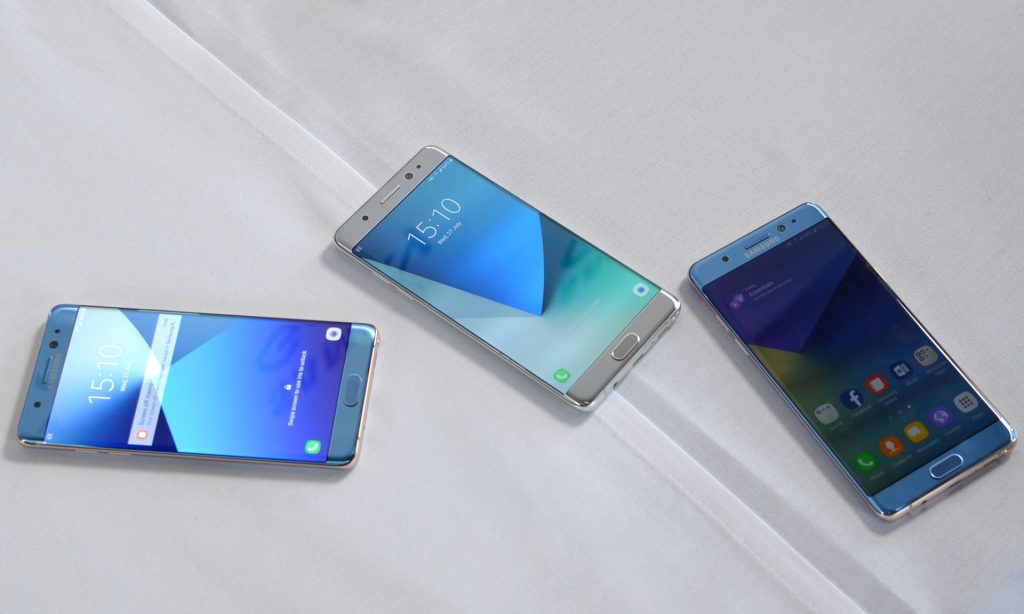
Photograph: Samuel Gibbs for the Guardian
The Note 7 has the same processor, graphics and amount of RAM as the S7 Edge and performs similarly.
Like the S7 Edge, the Note 7 is snappy and rapidly crunches through pretty much anything you might throw at it. It feels particularly sprightly loading and switching between programs. Split-screen multitasking also doesn’t slow it down, although the utility of it on a 5.7in screen is debatable.
Battery life is slightly disappointing. The Note 7 charges really fast, hitting 70% in 50 minutes via the included USB-C fast charger, but the battery won’t last much more than a day without special treatment.
Using it as my primary device, listening to five hours of music via Bluetooth headphones, browsing and using apps for three hours with hundreds of push emails and 30 minutes of light gaming, the Note 7 lasted from 7am on day one until 8am on day two.
Wireless charging worked well overnight on a 5W pad built into a piece of furniture. Battery-saving modes, including those that monitor apps and put those you don’t use to sleep to prevent them using power, are built in and I found battery life to slowly improve as that process rolled along.
It’s also worth noting that battery life is expected to increase by around 10%-20% with the roll out of Android 7.0 Nougat.
TouchWiz
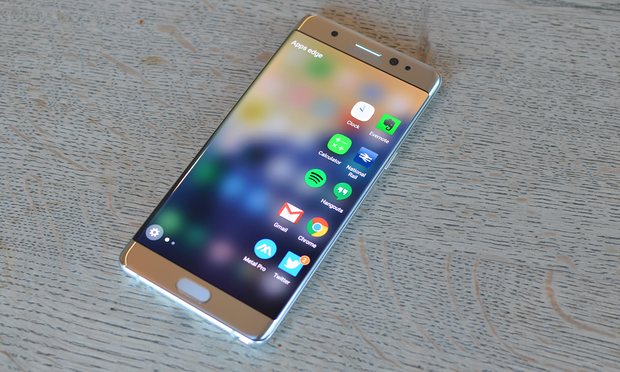
The Note 7 runs the same modified version of Android 6.0 Marshmallow called TouchWiz as the S7 Edge, but with additions to support the stylus.
Most of Samsung’s modifications to Android are good, particularly as Android 6.0 Marshmallow is now out of date. It has more quick settings, more power-saving modes including a system to identify and put unused apps to sleep, extensive control over notifications including the power of the vibration, and a built-in blue light filter for nighttime use.
The small audio output settings in the notification shade allow you to switch output between various Bluetooth devices, headphones and the internal speakers, without having to disconnect anything.
A collection of small edge utilities are available, useful for quickly accessing contacts or apps, but little beyond that. They can be removed if you do not find them useful. Samsung’s gaming tools can record game footage, stop notifications or buttons from disrupting play and can limit the smartphone’s performance to save battery power. You can minimise a game without pausing it too.
It’s not all good, however. The Upday social news aggregator panel on the homescreen (which replaced Flipboard on earlier Samsung phones) I found irritating so I turned it off. I also suffered a bug with Samsung’s new Cloud sync service, which backs up the phone’s contents to Samsung’s free 15GB cloud storage, which caused the Android media server service to rapidly drain the battery.
Media server bugs are common with Samsung smartphones, usually associated with corrupted images particularly on SD cards, although not in this case as I did not have a microSD card installed at the time. Turning off Samsung Cloud syncing was the only solution to the battery drain I could find. It is likely the result of using a pre-release device; it got several updates in the time I had with it.
Microsoft’s Office, Skype and OneDrive apps come pre-installed, which can be disabled but not uninstalled.
S Pen
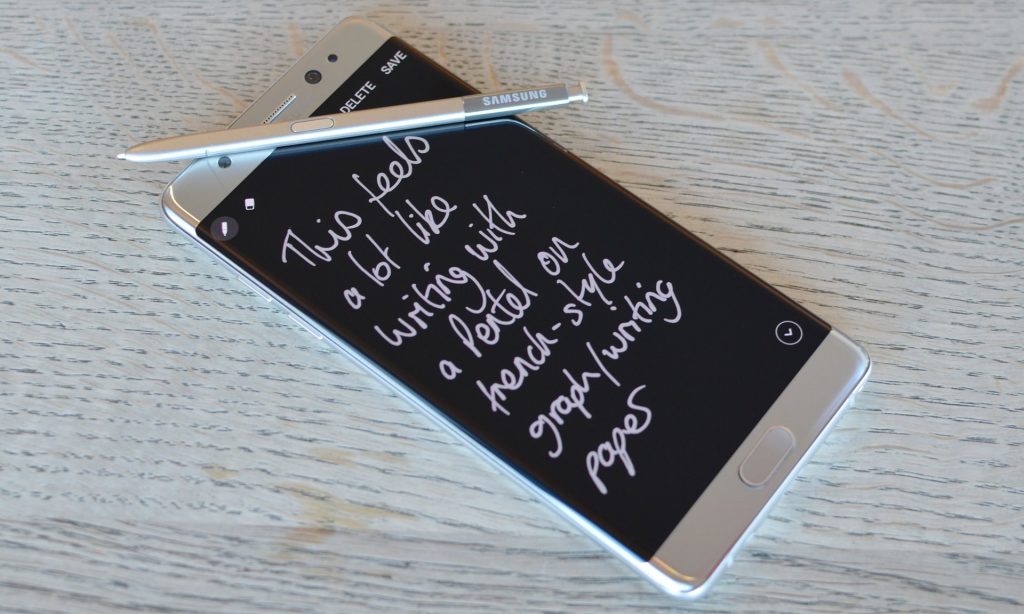
Photograph: Samuel Gibbs for the Guardian
The rest of Samsung’s software tweaks to Android are to support the S Pen stylus, which is one of the best small styluses available. The pressure-sensitive nib is significantly smaller than previous versions, which makes it feel more accurate, while the whole system is very responsive as long as you’re using a Samsung app.
Using the stylus in Evernote, for instance, a little bit of lag was noticeable but the feel on the screen has also been improved making it much more like drawing on paper.
Samsung’s new Notes app collects together most of the stylus features in one place. Hand-drawn notes, text, handwriting recognition, audio and images can be collated and synced with Samsung Cloud, but sadly not Evernote like Samsung’s older S Notes.
You can use the stylus to make quick selections of text for translation, screen annotations and use a solid collection of productivity tools. The S Pen works on the screen when the phone is asleep, which is saved to Samsung Notes and can be pinned on the screen like a post-it note.
All the stylus’s features can also be used when the screen is wet, which means it can be used underwater, if you really want. When not in use the stylus docks neatly into the phone.
The stylus is quite useful for drawing small diagrams, sketches or handwritten notes, but not much more than that. But it does have one killer new feature: instant gif making. You can record an area of the screen to make a gif of up to 15 seconds.
Fingerprint scanner
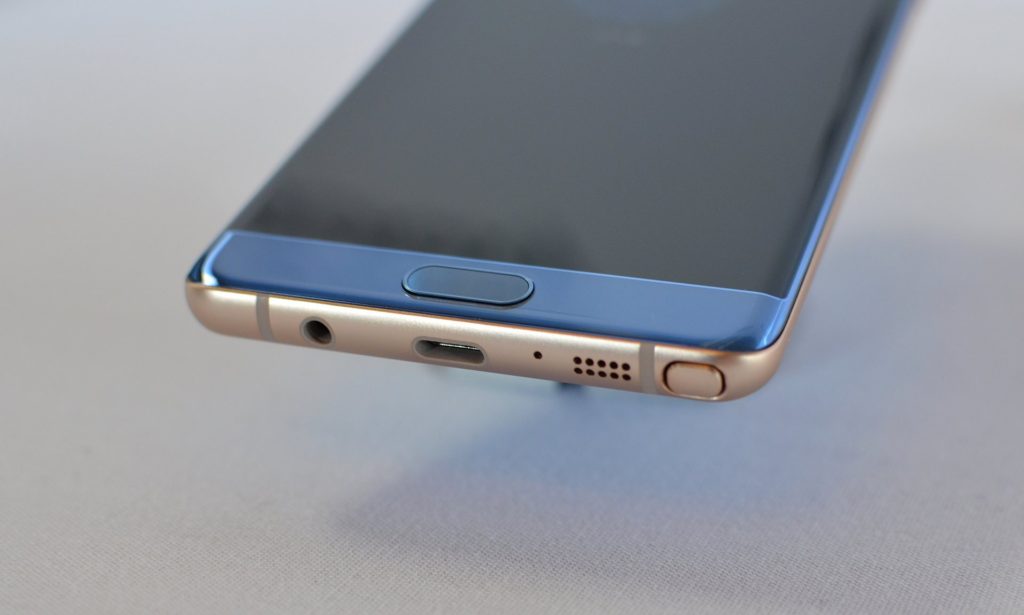
Photograph: Samuel Gibbs for the Guardian
The fingerprint scanner on the front is the same as the Galaxy S7 Edge and is solid, recognising my fingers and thumbs instantly most of the time. It will also secure apps, purchases and passwords, just like any other Android Marshmallow or later device.
Iris scanner
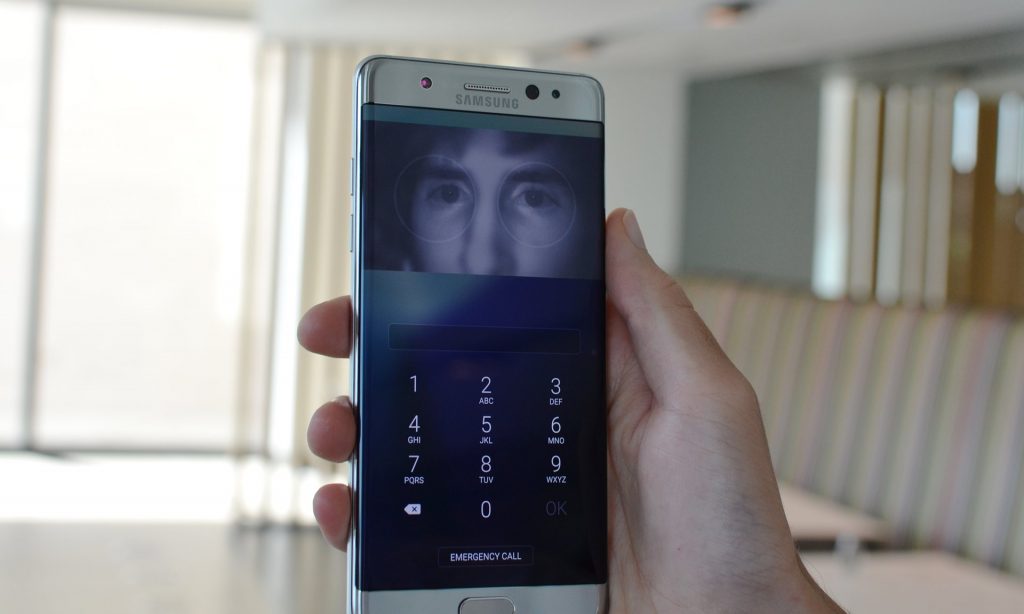
Look into my eyes.
Photograph: Samuel Gibbs for the Guardian
The Note 7 is one of the first smartphones to feature iris scanning, which uses an infrared camera to record and then match the unique patterns of your irises. It’ll match either or both your eyes, and works very well, unlocking the phone or authenticating something within a second.
You have to raise it up to eye level for it to reliably work, but it will recognise me even with an off-centre glance at the right height. I do not wear glasses or use contact lenses.
It isn’t as convenient as the fingerprint scanner, and requires a swipe up on the screen to activate, but works when your hands or the fingerprint scanner are covered, which will be very useful in winter.
Cameras
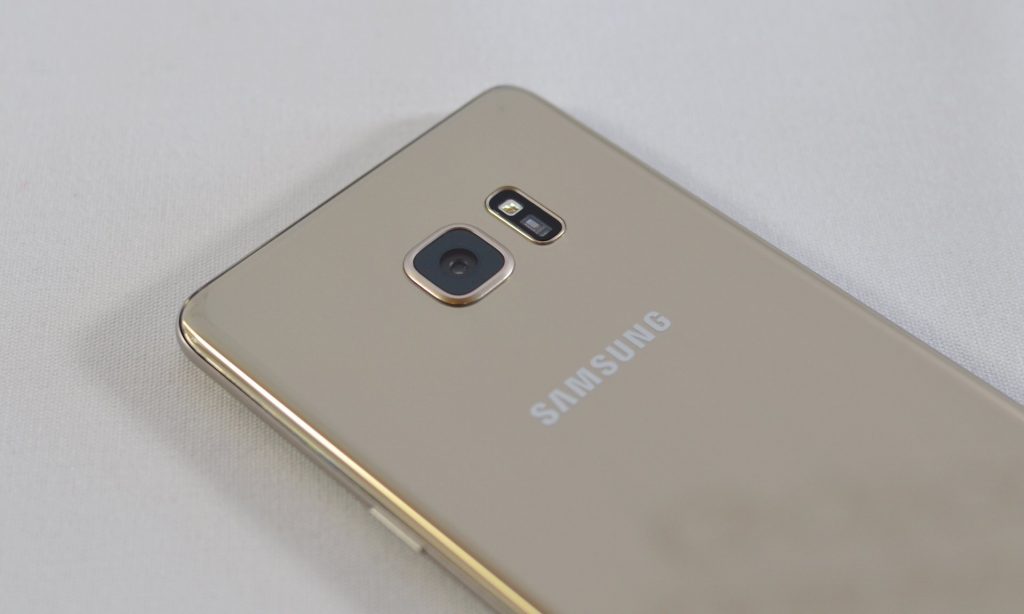
The Note 7 has the same front and back camera as the Galaxy S7 Edge, which are some of the best available on a smartphone.
The rear 12-megapixel camera is fast, great in low-light and makes it difficult to take a poor photo. It can take RAW photos too. The front-facing 5-megapixel selfie camera is good, but lacks fine detail, producing softer-looking photos that some may find more flattering.
Observations
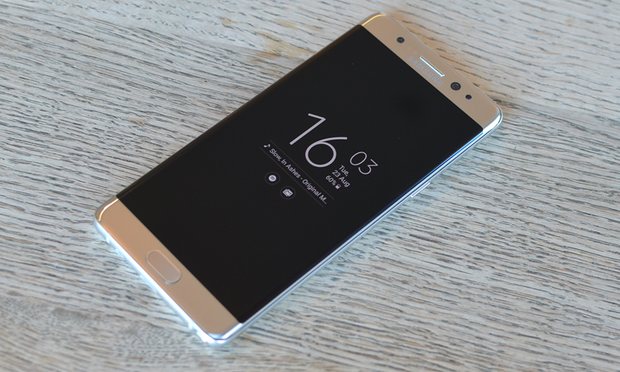
Photograph: Samuel Gibbs for the Guardian
- The back glass has surprisingly high levels of friction, which makes it easier to keep hold of, but also makes it a fingerprint magnet
- There’s a heart beat sensor on the back that barely anyone will employ for health monitoring, but it can be used as a selfie camera trigger
- You can only register four fingerprints on the scanner
- The always-on display shows the time, date, calendar or image, depending on your settings, and can be scheduled to turn on or off between set hours to not keep you up at night, or turned off completely
- The always-on display (which I had active turning my battery tests) consumed around 10-15% of battery life each day
- The Note 7 had the strongest signal of any smartphone I’ve tested, but suffered battery drain and got hot in the congested network conditions of London commuter trains
Price
The Samsung Galaxy Note 7 costs £700 and is available in three colours: black, blue with gold sides, and silver.
For comparison, the 5.5in Galaxy S7 Edge costs £639, the 5.7in Google Nexus 6P costs £449 (64GB is £499) and the 5.5in Apple iPhone 6S Plus costs £619 (64GB is £699), which makes the Note 7 about the same price as top-end rivals.
Verdict
The Samsung Galaxy Note 7 is, without doubt, the best phablet going. It’s powerful, full of useful features and little in the way of gimmicks, and provides productivity tools others simply don’t.
The S Pen is something you may not use all the time, but comes in really handy at least once a day for me, and when not in use safely docks out the way, not detracting from the aesthetic or function of the phone.
The cameras, fingerprint scanner, wireless charging, waterproofing and screen are also top notch. So is the fit, finish and feel of the device. The iris scanner is a novelty that may become more useful when winter rolls along. But it is the curved edges and minuscule bezels around the screen that are the Note 7’s best bit.
They make a very large phone feel not too big too hold – it’s more manageable than any other 5.7in phablet without sacrificing screen real estate.
The only real downside, which has been the same for each of Samsung’s Note series launched around August, is that its software is no longer up to date. Android 7.0 Nougat is much improved on notifications and battery life. The Note 7 will get an update to Nougat, but when is unknown.
Pros: waterproof, curved screen and back, fingerprint scanner, iris scanner, wireless charging, microSD card slot, S Pen, brilliant display, great camera
Cons: not yet Android 7 Nougat, only one day’s battery, expensive
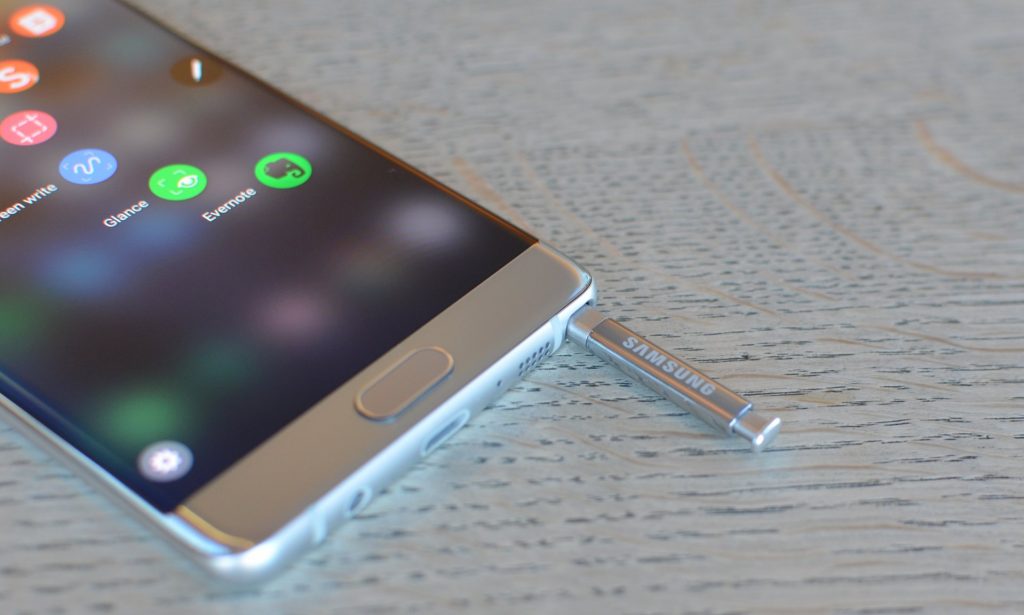
Photograph: Samuel Gibbs for the Guardian

